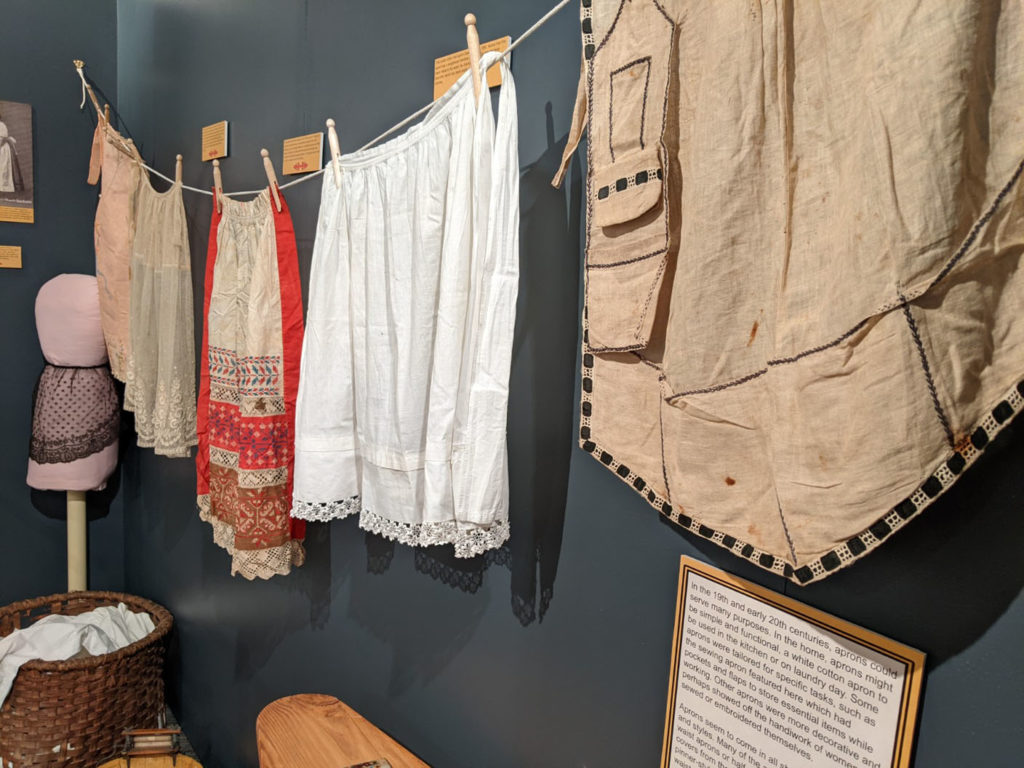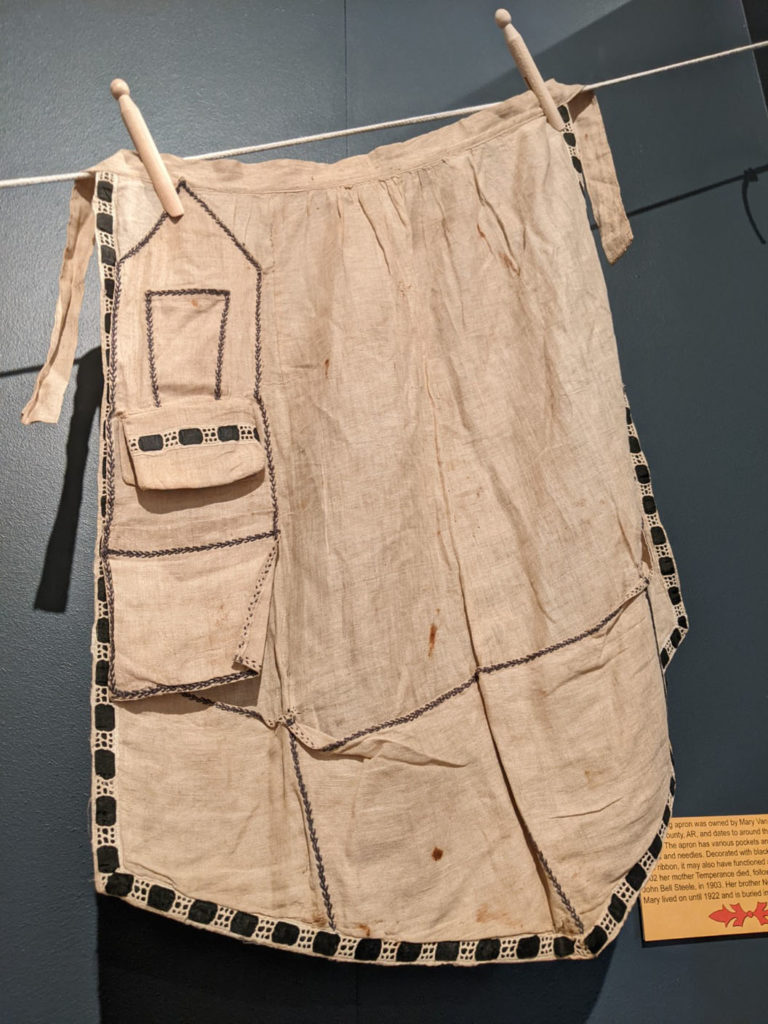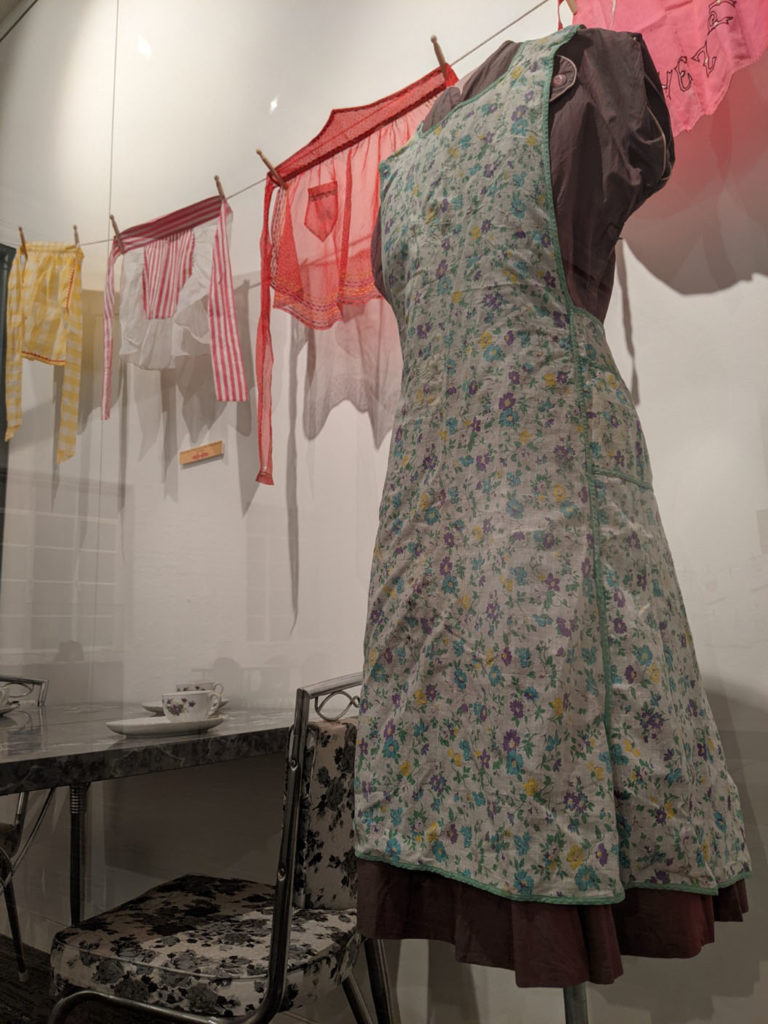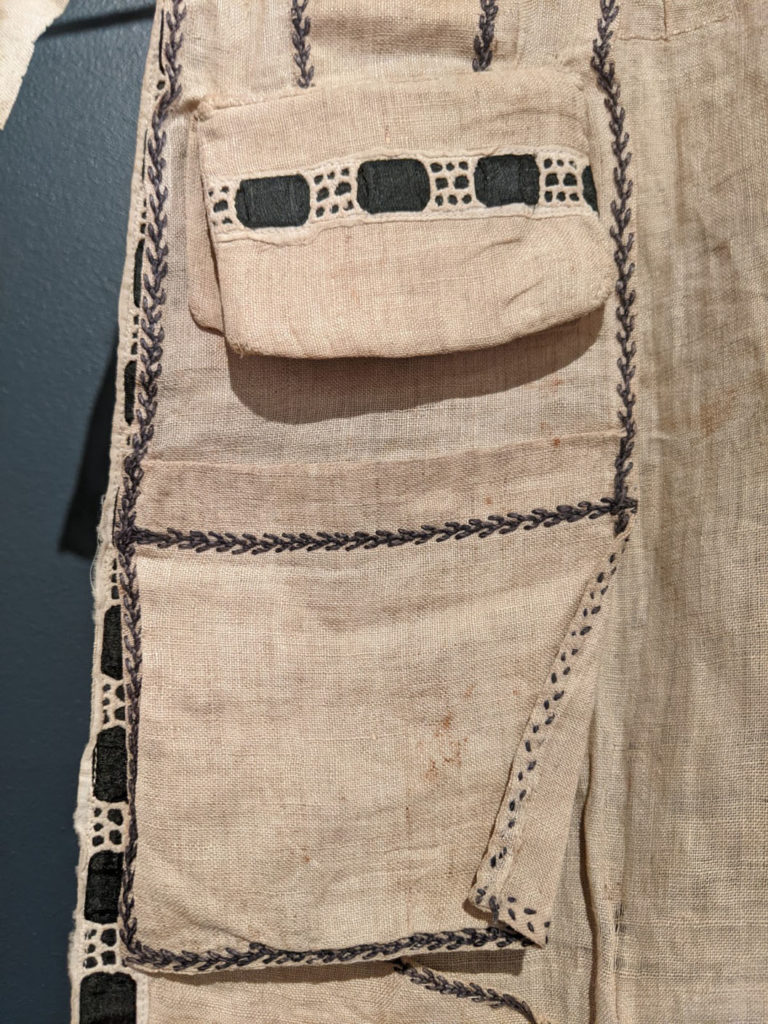BECCA MARTIN-BROWN
bmartin@nwaonline.com
“The use of aprons has been important to humans since time immemorial,” says Serena Barnett, director of the Rogers Historical Museum. “Aprons have served both function and fashion through the centuries [and] can often tell stories about the people that wore them and sometimes even reflect their personal style.”
The exhibit “Aprons: Function to Fad” debuted Feb. 5 at the museum in downtown Rogers and will remain open through April 9. “In it, you’ll see everything from utilitarian aprons used by housewives and tradesmen to novelty aprons used just for show,” Barnett says.
Barnett has her own family memories of an apron playing an important part in holiday celebrations.
“As a child, I remember my grandma wearing a red, green and white half apron at Christmas,” she says. “She would only wear it at Christmas in the kitchen and then remove it before sitting down at the table for Christmas dinner.”
Barnett answered these three questions for What’s Up!
Q. What inspired an interest in aprons?
In the late 1990s, RHM hosted a traveling exhibit about aprons from ExhibitsUSA titled “Apron Strings: Ties to the Past.” We thought it would be interesting to use aprons from our collection and loans from individuals to create our own exhibit to focus on the function and fads of aprons as they represent not only a wide variety of aprons and their uses, but aprons owned and used by people from our local past.
Q. Once the topic presented itself, what did you find in the RHM archives that surprised and delighted you?
A. The quantity of aprons we have in the collection that had strong ties (pun intended) to early Rogers and Northwest Arkansas. In fact, we had so many aprons to choose from for this exhibit that we unfortunately couldn’t display them all.
Q. What is your favorite artifact in the exhibit? And what is your favorite quote/story?
A. Among my favorites is a sewing apron once owned by Mary Van Winkle Steele of Rogers and dating to around the turn of the 20th century. The various pockets and flaps are designed to hold sewing needles and other notions. In fact, one of the pockets contains pins that had been left by the apron’s last wearer. The use of black embroidery and black satin ribbon as embellishments possibly means that this apron may have additionally functioned as a mourning apron. Recorded family deaths from this period support this belief. In 1902, Mary’s mother Temperance died, followed by her husband John Bell Steele in 1903. Her brother Norman died in 1907. Mary lived on until 1922 and is buried in Rogers.

Some of the household aprons on display in the “Aprons: Function to Fad” exhibit date from the late 1800 to the early 1900s. While these aprons typically served as functional for household chores, some also show off the handiwork of the women who sewed or embroidered themselves. (Courtesy Photo/RHM) 
One of the featured aprons in the “Aprons: Function to Fad” exhibit at the Rogers Historical Museum is this sewing apron. It was made around 1900 and belonged to Mary Van Winkle Steele of Rogers. The black thread stitching and black ribbon embellishments indicate that this apron may have been made to wear during a period of mourning for the death of a family member. (Courtesy Photos/RHM) 
The postwar 1940s and 1950s were the heyday of aprons, seen as symbols of home and family. Practical bib aprons made of printed cotton were the everyday apron worn for performing household chores. In the economic boom of the 1950s, aprons became more fanciful and less functional. Hostess aprons became popular among American housewives, decorative aprons worn solely for entertaining in the home, says RHM Director Serena Barnett. (Courtesy Photo/RHM) 
One of the featured aprons in the “Aprons: Function to Fad” exhibit at the Rogers Historical Museum is this sewing apron. It was made around 1900 and belonged to Mary Van Winkle Steele of Rogers. The black thread stitching and black ribbon embellishments indicate that this apron may have been made to wear during a period of mourning for the death of a family member. (Courtesy Photos/RHM)
__
FAQ
‘Aprons: Function to Fad’
WHEN — 10 a.m.-4 p.m. Tuesday-Saturday, through April 9
WHERE — Rogers Historical Museum, 313 S. Second St.
COST — Free
INFO — 621-1154 or rogershistoricalmuseum.org
__
FYI
What’s Next?
Asked what’s next at the Rogers Historical Museum, Director Serena Barnett says “a bunch of fun stuff,” providing a calendar for spring that includes:
March 5-June 4 — “Welcoming Baby”: A Hawkins House themed tour celebrating the Victorian era arrival of a new baby.
March 22 — Excavation Station: Learn some of the documenting techniques archeologists use at their historic excavation sites and investigate how objects and their place of discovery provide clues that tell a story to a trained archeologist who knows what questions to ask. 10 a.m.-noon with 30-minute timed reservations required. Free. For ages 6-12.
March 24 — Connecting-the-Pots: Using the same techniques archeologists use, learn how to dig up and reassemble broken pottery using a terracotta pot. Then discover some of the pre-historic pottery designs that have been found in Arkansas and use them for inspiration to decorate your own small terracotta pot. 10 a.m.-noon with 30-minute timed reservations required. Free. For ages 6-12.
April 16-June 25 — “Creative Minds in the Ozarks”: The Ozarks have been home to many artists, including painters, woodworkers and other craftsmen. Take a look at some of the objects in the museum’s collection that were made by various Ozark artists, among them Roy Harris (folk art woodcarver), Elsie Mistie Sterling (sketch artist and painter) and Henry Tribble (wood inlayer).
May 7-Nov. 12 — “Civil War in Benton County”: Untold Stories: Learn about some of the true stories of bushwhacker attacks, food shortages and other daily life and death challenges for Benton County civilians in a war-torn land on the edge of the American frontier. This exhibit shares personal accounts from letters, local family histories and other documents detailing experiences of daily life during the Civil War period.
June 4 — Family Day: Have some fun at the museum with food, crafts, music, games and more. 10 a.m.-2 p.m. Free.



